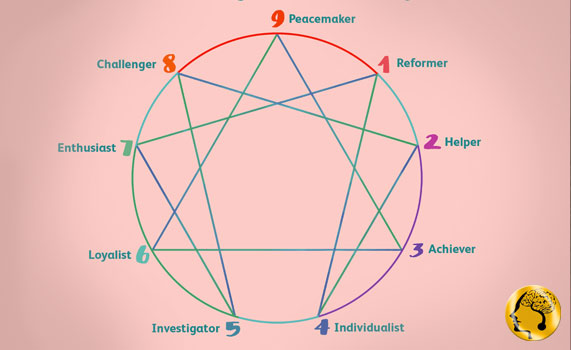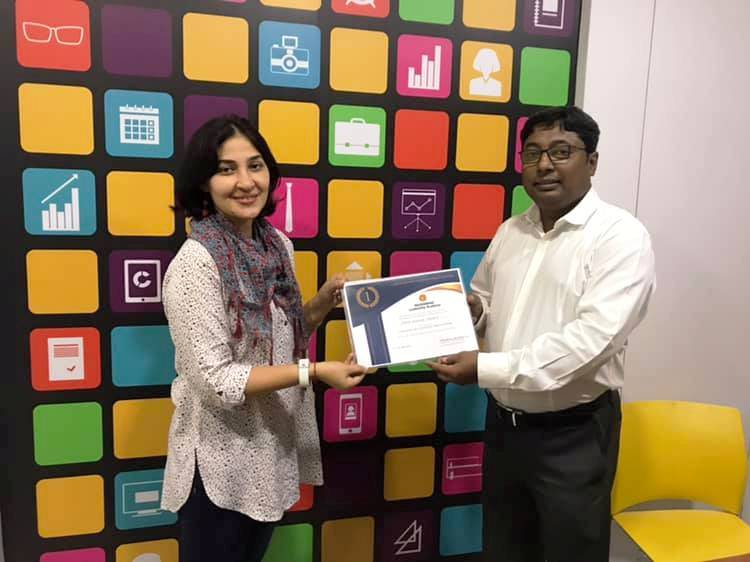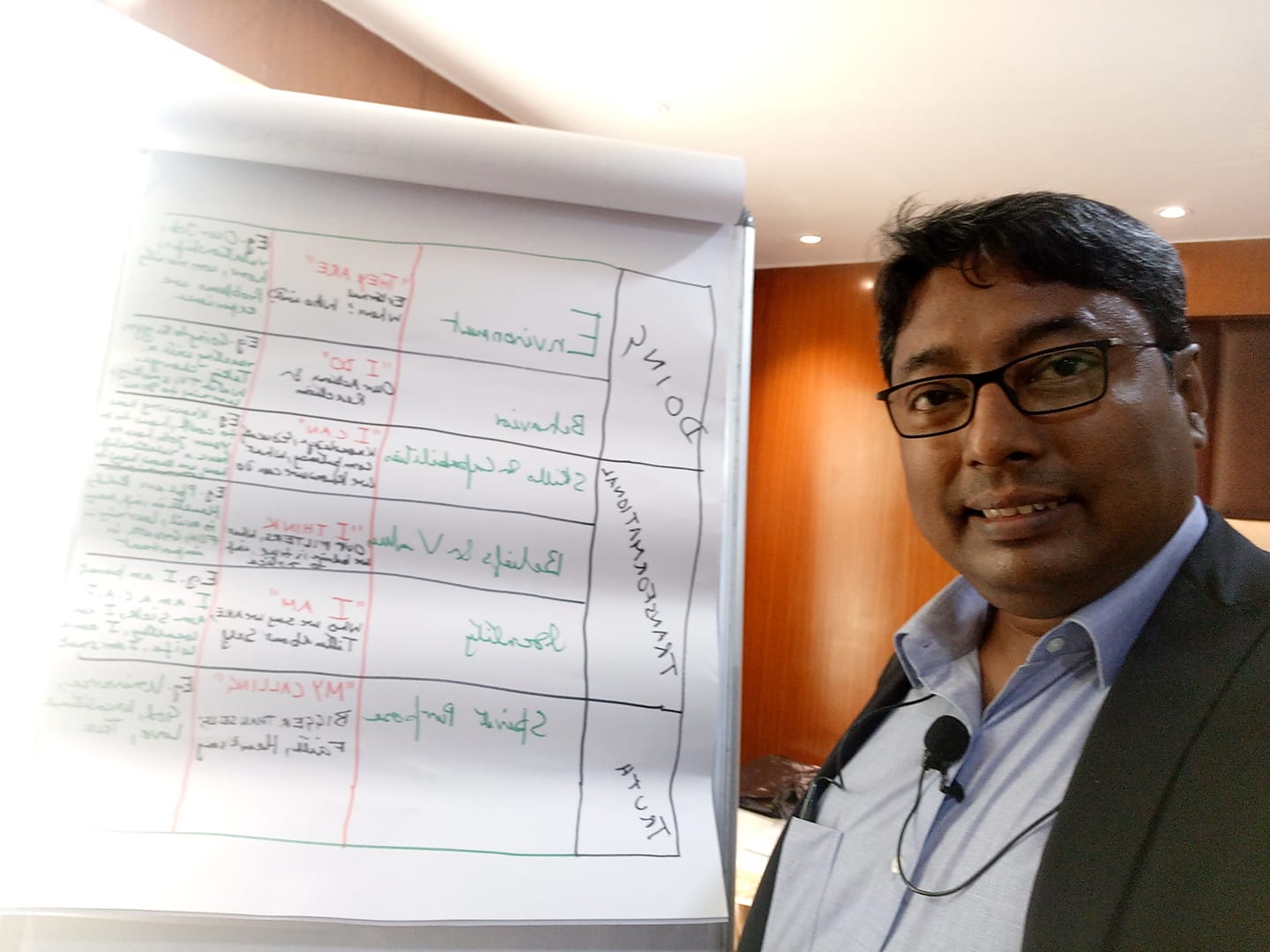NLP is a pragmatic school of thought—an ‘epistemology’—that addresses the many levels involved in being human. NLP is a multi-dimensional process that involves the development of behavioral competence and flexibility, but also involves strategic thinking and an understanding of the mental and cognitive processes behind behavior. NLP provides tools and skills for the development of states of individual excellence, but it also establishes a system of empowering beliefs and presuppositions about what human beings are, what communication is, and what the process of change is all about. At another level, NLP is about self-discovery, exploring identity and mission. It also provides a framework for understanding and relating to the ‘spiritual’ part of human experience that reaches beyond us as individuals to our family, groups, communities and global systems. NLP is not only about competence and excellence; it is about wisdom and vision. In essence, all of NLP is founded on two fundamental premises:
1. The Map is Not the Territory. As human beings, we can never know reality. We can only know our perceptions of reality. We experience and respond to the world around us primarily through our sensory representational systems. It is our ‘neuro-linguistic’ maps of reality that determine how we behave and that give those behaviors meaning, not reality itself. It is generally not reality that limits us or empowers us, but rather our map of reality.
2. Life and ‘Mind’ are Systemic Processes. The processes that take place within a human being and between human beings and their environment are systemic. Our bodies, our societies, and our universe form an ecology of complex systems and sub-systems all of which interact with and mutually influence each other. It is not possible to completely isolate any part of the system from the rest of the system. Such systems are based on certain ‘self-organizing’ principles and naturally seek optimal states of balance orhomeostasis.
All of the models and techniques of NLP are based on the combination of these two principles (see Presuppositions of NLP). In the belief system of NLP, it is not possible for human beings to know objective reality. Wisdom, ethics and ecology do not derive from having the one ‘right’ or ‘correct’ map of the world, because human beings would not be capable of making one. Rather, the goal is to create the richest map possible that respects the systemic nature and ecology of ourselves and the world we live in. The people who are most effective are the ones who have a map of the world that allows them to perceive the greatest number of available choices and perspectives. NLP is a way of enriching the choices that you have and perceive as available in the world around you. Excellence comes from having many choices. Wisdom comes from having multiple perspectives.


According to NLP, the basic process of change involves 1) finding out what the present state of the person is, and 2) adding the appropriate resources to lead that person to 3) the desired state.
Present State + Appropriate Resources -> Desired State
The distinctions and techniques of NLP are organized to help identify and define present states and desired states of various types and levels and then to access and apply the appropriate resources to produce effective and ecological change in the direction of the desired state. Through the years, NLP has developed some very powerful tools and skills for communication and change in a wide range of professional areas including: counseling, psychotherapy, education, health, creativity, law, management, sales, leadership and parenting.
The function of any Neuro-Linguistic Programming technique is to enrich, or add to, one of the three properties of effective behavior – that is, having: a) an explicit representation of the outcome; b) sensory experience; and c) flexibility of internal responses and external behavior.
The many, many explicit techniques and procedures that make up the behavioral technology of NLP are presented in the ever-growing number of books that represent the development of the field of Neuro-Linguistic Programming. There are also many techniques that have not been transformed into written representations, and many still in the process of being refined and developed.
1. Identifying and matching the most commonly used sensory-based words and predicates of another person for the purposes of creating rapport and insuring understanding.
2. Pacing, through the matching and mirroring of postural, gestural, and facial positions and movements, and of voice tone and tempo qualities of another person, in order to contribute to attaining rapport with that person.
3. Translating experiences expressed through one representational modality to another, to help increase understanding between individuals or groups having difficulty communicating with one another.
4. Observation and utilization of sensory accessing cues and micro-behavioral cues, to help understand and pace another person’s typical processing strategies for organizing and making sense of his or her experiences, and communications received from others.
5. Helping to build new representational possibilities and capabilities in others, through the use of sensory-specific language and systematic use of accessing cues.
6. Helping to increase sensory awareness in order to more accurately and immediately perceive and evaluate the effects of people’s behaviors on one another.
7. Identifying and sorting out multiple (incongruent) communications in others in order to help reduce misunderstanding and confusion.
8. Establishing anchors and triggers for positive experiences and resources that occur in one context, and re-triggering or re-sequencing them in other situations where they are not yet available to a particular individual or group. As a result, those behaviors and responses may serve as resources in other contexts as well.
9. Identifying and breaking unuseful “calibrated loops ”between individuals and groups in order to add more flexibility and choice in responses and communication.
10. Breaking down unspecified verbal maps into higher quality verbal descriptions and, more importantly, behavioral demonstrations and examples, in order to create easily shared and observable representations of a person’s experiences and outcomes.
11. Framing and re-framing problematic behaviors and responses by making the positive intentions and positive by-products underlying them more explicit. The purpose of this is to create a shift in the perceptions of people, with respect to the behavior, so that it may be handled more resourcefully. The shift in perception functions to:
a) Separating “self” from “behavior” through the reinforcement and validation of the individual as a person by associating the “self” with the positive intent. Any negative responses may, then, be directed toward the behavioral manifestation rather than the person himself or herself.
Preserving the positive intent of the problematic behavior even though the behavioral means used to secure the positive intention are altered.
b) Preserving and validating the positive by-product of the behavior or response, which serves to help preserve the ecology of the system as well as validating the “self” while changing the unwanted behavior.
12. Creating and reinforcing flexibility in the members of a system through role playing and other forms of behavioral modeling, in order to help the members of the system more consistently and systematically elicit desired behaviors and responses from other members.
13. Eliciting and detailing a high quality description and demonstration of a group’s or individual’s outcome(s) or desired state(s) that will be well-formed, practical, and ecological for the particular system to which they belong.



The field of NLP has continued to evolve tremendously over the past two decades; primarily as a result of the continued application of modeling in many new areas. The “open” structure of NLP has allowed the field itself to change and expand in accordance with its own findings. Each time the focus of attention shifts as a result of modeling some new phenomenon in our experience, another level of distinctions and patterns is added — there is “recoding” of NLP.
NLP New Coding, for example, is a reformulation of basic NLP principles and processes developed by Judith De Lozier and John Grinder in the late 1980’s (Turtles All The Way Down, 1987). Drawing heavily from Gregory Bateson’s work in the area of systems theory, NLP New Code proposes a reorganization of NLP methods and tools based upon the key concepts of “states,” “conscious/unconscious relationships,” “perceptual positions,” “multiple descriptions” and “perceptual filters.” This represented a fundamental departure from the “old code” (or “classic code”) of NLP, which was primarily based on the categorization of specific linguistic, behavioral, and sensory distinctions. In contrast, the point of focus in NLP New Coding is on the interactions and relationships between the elements in a system.
Another important development in NLP has been the emergence of Systemic NLP, pioneered by Robert Dilts and Todd Epstein in the late 1980’s. The purpose of Systemic NLP was to reintroduce a cybernetic framework, promote an emphasis on ‘ecology’, and bring systemic thinking skills more fully into the practice of NLP. In addition to Gregory Bateson’s work in the area of cybernetics, Systemic NLP incorporated new ideas and principles from other systemically based models and methodologies, including self-organization theory, neural network technology, and artificial intelligence.
In the early 1990’s Dilts and Epstein were joined by Judith De Lozier, who added developments from her work with NLP New Coding. The result of this collaboration is a profound and integrated approach to NLP that has been responsible for many of the most significant recent developments in the field; including: the S.C.O.R.E. Model, Neuro Logical Levels, Generative NLP, and Somatic Syntax.
The basic intention of Systemic NLP is to synthesize and expand upon the existing models and distinctions of NLP by placing them in a systemic perspective. Similar to NLP New Coding, the focus of Systemic NLP is on the dynamic interactions and relationships between the elements in a system, with an emphasis on ecology. Systemic NLP principles and methods have been able to extend applications of NLP beyond individuals to address issues relating to groups, organizations and cultures. These developments are exemplified by the establishment of NLP University, the NLP World Health Community, the NLP Community Leadership Project, and the Global NLP Training and Consulting Community.
Third Generation NLP
NLP is now in its third decade as a field of study and has evolved considerably since its beginnings in the mid 1970s. As a third generation of NLP developers, trainers and practitioners move into the world, it is also time to acknowledge a third generation of NLP.
First Generation NLP was the original model of NLP derived by Bandler and Grinder from their study of effective therapists. These early applications of NLP were all applied one-on-one, with the focus almost entirely on the individual.
First generation NLP presupposed a therapeutic relationship in which the therapist knew what was best for his or her client. NLP was considered something that one “did to other people.” This led to some NLP applications as seeming to be manipulative when used in non-therapeutic contexts. Most of the first generation tools and techniques were focused on problem solving at level of behavior and capabilities.
Second generation NLP began to emerge in the mid to late 1980s. At this time, NLP was expanding to embrace other issues beyond the therapeutic context. While still focused on individuals, second generation NLP emphasized the relationship between oneself and others and widened to include such areas of application as negotiation, sales, education and health.
The tools of NLP also expanded to include higher-level issues, such as those related to beliefs, values and “meta programs.” Second generation NLP techniques integrated the use of new distinctions such as time lines, sub-modalities and perceptual positions.
Third generation NLP has been developing since the 1990s. The applications of third generation NLP are generative, systemic and focused on high level issues such as identity, vision and mission. Third generation NLP emphasizes whole system change and can be applied to organizational and cultural development as well as to individuals and teams.
All generations of NLP focus on the structure and functioning of the mind (this is the essence of “Neuro Linguistic Programming”). The first two generations of NLP, however, placed attention almost exclusively on the cognitive mind. Third generation NLP expands to include both somatic processes and larger system dynamics (i.e., “field”) in the total “unit of mind.” Thus, third generation NLP works with the interaction between three “minds”:
1. A “cognitive” mind that emerges from the brains (cephalic, cardiac and enteric brain)
2. A “somatic” mind centered in the body
3. A “field” mind that comes from our connection and relationships with other systems around us
Third generation NLP aspires to develop and sustain an organic relationship of balance between these three minds. The techniques of third generation NLP have to do with centering in our somatic core, cognitively sponsoring the development of wholeness within people, and connecting through relationships to the wisdom and guidance within the larger systems around us.




